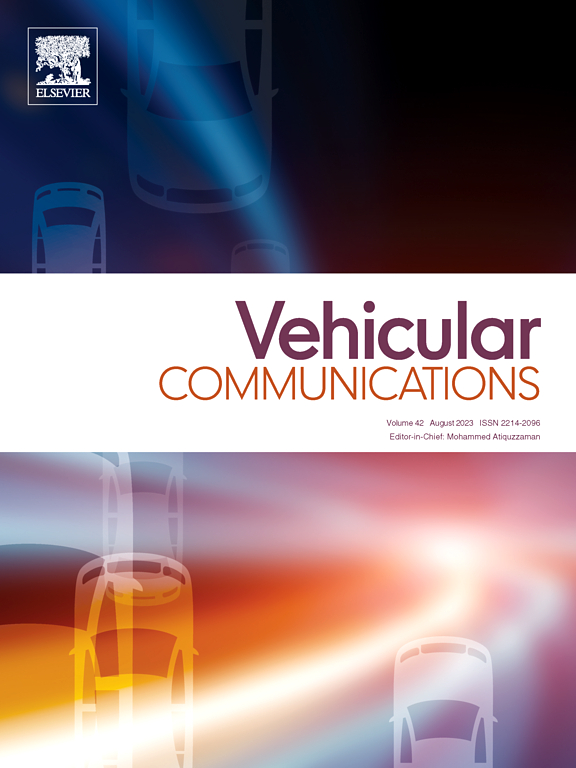MIEC:一个磁力启发的框架,用于mrec中的MS部署和联合任务卸载和资源分配优化
IF 6.5
2区 计算机科学
Q1 TELECOMMUNICATIONS
引用次数: 0
摘要
随着物联网(IoT)设备的快速增长,移动边缘计算(MEC)在满足日益增长的计算需求方面面临挑战,特别是在资源受限的环境下。为了解决这一问题,我们提出了低轨道卫星- ms - rsu边缘计算(LMREC)框架,该框架将移动服务器(ms)、低地球轨道(LEO)卫星网络和路边单元(rsu)集成到一个创新的边缘计算架构中。我们首先引入“吸引力”和“排斥力”指标来模拟车载卫星服务器为特定用户服务的意愿。随后,我们设计了一个磁平衡算法(MEA),该算法通过平衡用户驱动的吸引力和服务器排斥来动态调整MS的部署和服务分配。为了解决任务调度的延迟敏感性和用户满意度问题,我们提出了一个混合整数非线性规划(MINLP)的任务卸载和资源分配优化问题。由于该优化问题难以在多项式时间内解决,我们提出了一种磁域迁移算法(MDMA)来获得近似最优解。在MDMA中,将任务建模为磁场中的磁域迁移,并将优化问题分解为子问题,利用精确势博弈论、凸优化和混合遗传算法求解子问题。最后,仿真结果验证了LMREC框架的有效性,表明其优于现有方法,并具有增强终端设备、rsu和LEO卫星网络之间协作的潜力。本文章由计算机程序翻译,如有差异,请以英文原文为准。
MIEC: A magnetism-inspired framework for MS deployment and joint task offloading and resource allocation optimization in LMREC
With the rapid growth of Internet of Things (IoT) devices, Mobile Edge Computing (MEC) faces challenges in meeting increasing computational demands, especially in resource-constrained environments. To address this issue, we propose the LEO Satellite-MS-RSU Edge Computing (LMREC) framework, which integrates Mobile Servers (MSs), Low Earth Orbit (LEO) satellite networks, and Roadside Units (RSUs) into an innovative edge computing architecture. We first introduce “attraction” and “repulsion” metrics to model the willingness of vehicular satellite servers to serve specific users. Subsequently, we design a Magnetic Equilibrium Algorithm (MEA), which dynamically adjusts the MS deployment and service allocation by balancing user-driven attraction and server repulsion. To address the latency sensitivity of task scheduling and user satisfaction in LMREC, we formulate a mixed-integer nonlinear programming (MINLP) optimization problem for task offloading and resource allocation. Since this optimization problem is intractable to solve in polynomial time, we propose a Magnetic Domain Migration Algorithm (MDMA) to obtain a near-optimal solution. In MDMA, tasks are modeled as magnetic domains migrating in a magnetic field, and the optimization problem is decomposed into subproblems, which are solved using Exact Potential Game Theory, convex optimization, and a hybrid genetic algorithm. Finally, simulation results validate the effectiveness of the LMREC framework, demonstrating its superiority over existing methods and its potential to enhance collaboration among end devices, RSUs, and LEO satellite networks.
求助全文
通过发布文献求助,成功后即可免费获取论文全文。
去求助
来源期刊

Vehicular Communications
Engineering-Electrical and Electronic Engineering
CiteScore
12.70
自引率
10.40%
发文量
88
审稿时长
62 days
期刊介绍:
Vehicular communications is a growing area of communications between vehicles and including roadside communication infrastructure. Advances in wireless communications are making possible sharing of information through real time communications between vehicles and infrastructure. This has led to applications to increase safety of vehicles and communication between passengers and the Internet. Standardization efforts on vehicular communication are also underway to make vehicular transportation safer, greener and easier.
The aim of the journal is to publish high quality peer–reviewed papers in the area of vehicular communications. The scope encompasses all types of communications involving vehicles, including vehicle–to–vehicle and vehicle–to–infrastructure. The scope includes (but not limited to) the following topics related to vehicular communications:
Vehicle to vehicle and vehicle to infrastructure communications
Channel modelling, modulating and coding
Congestion Control and scalability issues
Protocol design, testing and verification
Routing in vehicular networks
Security issues and countermeasures
Deployment and field testing
Reducing energy consumption and enhancing safety of vehicles
Wireless in–car networks
Data collection and dissemination methods
Mobility and handover issues
Safety and driver assistance applications
UAV
Underwater communications
Autonomous cooperative driving
Social networks
Internet of vehicles
Standardization of protocols.
 求助内容:
求助内容: 应助结果提醒方式:
应助结果提醒方式:


